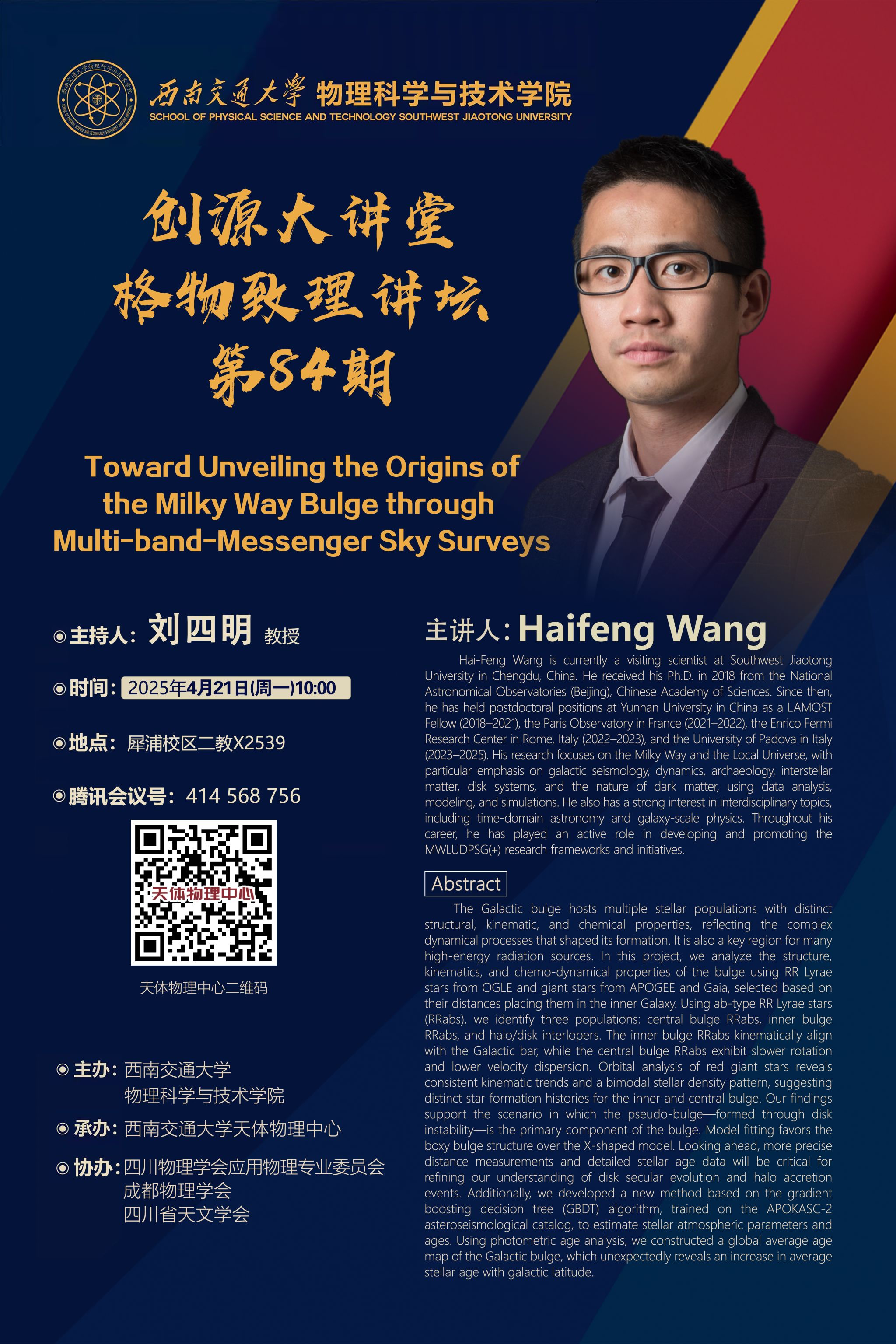主持人:刘四明教授
时间:2025年4月21日(周一)10:00
地点:犀浦校区二教2539会议室
腾讯会议:414 568 756
题目: Toward Unveiling the Origins of the Milky Way Bulge through Multi-band-Messenger Sky Surveys
主讲人: Haifeng Wang
Hai-Feng Wang is currently a visiting scientist at Southwest Jiaotong University in Chengdu, China. He received his Ph.D. in 2018 from the National Astronomical Observatories (Beijing), Chinese Academy of Sciences. Since then, he has held postdoctoral positions at Yunnan University in China as a LAMOST Fellow (2018–2021), the Paris Observatory in France (2021–2022), the Enrico Fermi Research Center in Rome, Italy (2022–2023), and the University of Padova in Italy (2023–2025). His research focuses on the Milky Way and the Local Universe, with particular emphasis on galactic seismology, dynamics, archaeology, interstellar matter, disk systems, and the nature of dark matter, using data analysis, modeling, and simulations. He also has a strong interest in interdisciplinary topics, including time-domain astronomy and galaxy-scale physics. Throughout his career, he has played an active role in developing and promoting the MWLUDPSG(+) research frameworks and initiatives.
Abstract: The Galactic bulge hosts multiple stellar populations with distinct structural, kinematic, and chemical properties, reflecting the complex dynamical processes that shaped its formation. It is also a key region for many high-energy radiation sources. In this project, we analyze the structure, kinematics, and chemo-dynamical properties of the bulge using RR Lyrae stars from OGLE and giant stars from APOGEE and Gaia, selected based on their distances placing them in the inner Galaxy. Using ab-type RR Lyrae stars (RRabs), we identify three populations: central bulge RRabs, inner bulge RRabs, and halo/disk interlopers. The inner bulge RRabs kinematically align with the Galactic bar, while the central bulge RRabs exhibit slower rotation and lower velocity dispersion. Orbital analysis of red giant stars reveals consistent kinematic trends and a bimodal stellar density pattern, suggesting distinct star formation histories for the inner and central bulge. Our findings support the scenario in which the pseudo-bulge—formed through disk instability—is the primary component of the bulge. Model fitting favors the boxy bulge structure over the X-shaped model. Looking ahead, more precise distance measurements and detailed stellar age data will be critical for refining our understanding of disk secular evolution and halo accretion events. Additionally, we developed a new method based on the gradient boosting decision tree (GBDT) algorithm, trained on the APOKASC-2 asteroseismological catalog, to estimate stellar atmospheric parameters and ages. Using photometric age analysis, we constructed a global average age map of the Galactic bulge, which unexpectedly reveals an increase in average stellar age with galactic latitude.
